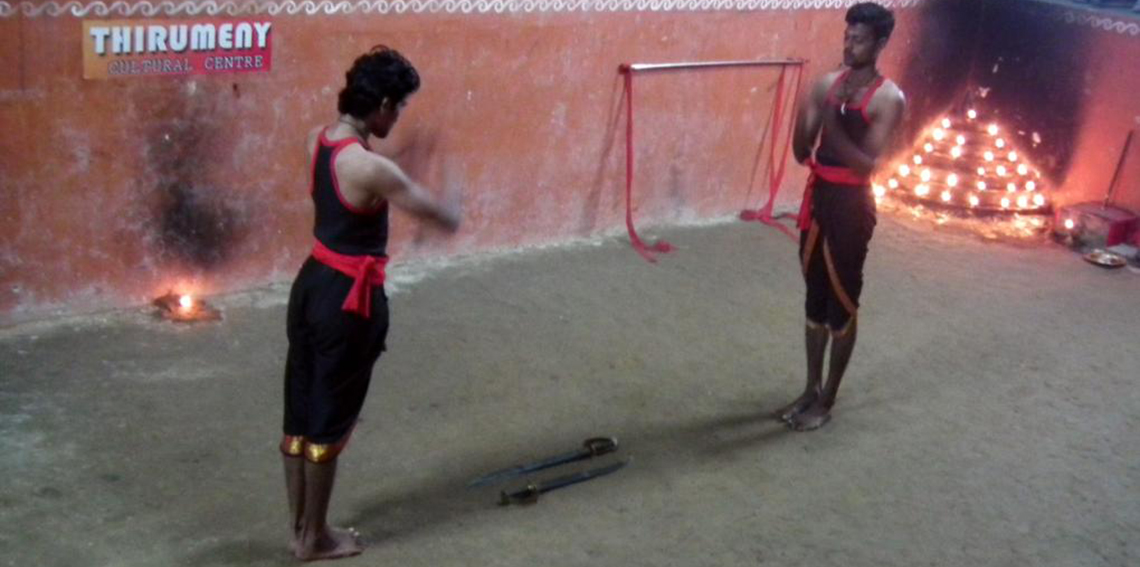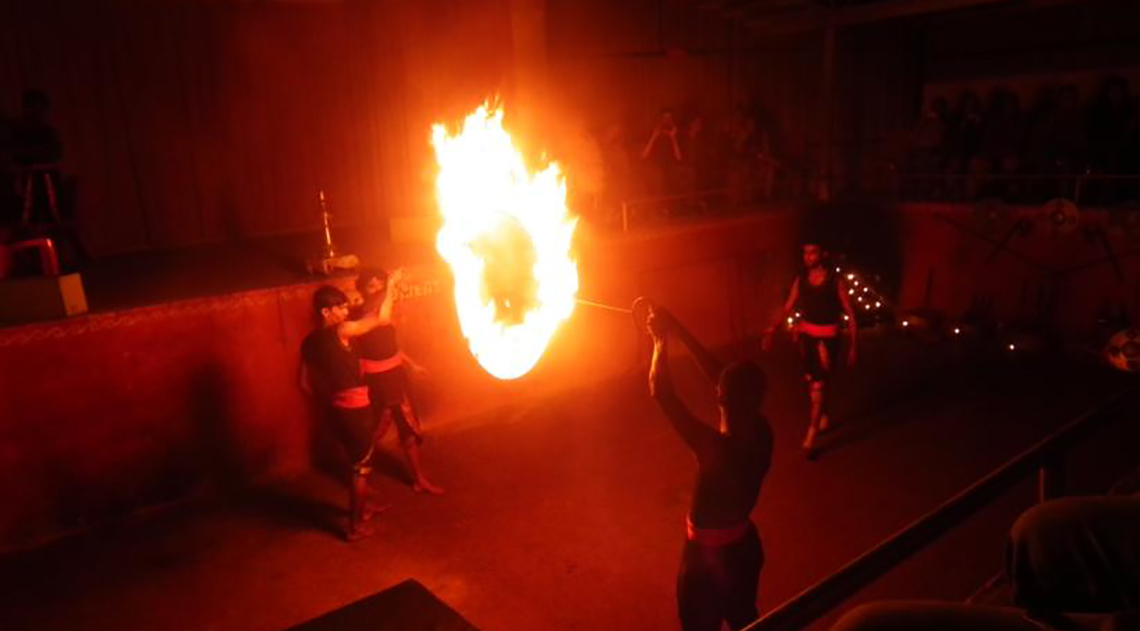Munnar Diaries Part 3 – Kerala’s oldest martial art: Kalaripayattu
In this third part of Shireen Bharucha’s travelogue on Munnar, she shares her experience of watching Kalaripayattu, an ancient martial art that is widely taught and practiced in Kerala. Shireen gives us a realistic account of the excellent skills and precision that’s part of this age-old art.
We see the Kalaripayattu show at the unpretentious Thirumeny Cultural Centre in Munnar at 6 p.m. Tickets cost Rs.200/- per head. Kalaripayattu is one of the oldest martial art forms of Kerala, dating back to 2000 years or more. The Malayalam word ‘kalari’ means gymnasium and ‘payattu’ means exercise in weaponry. It is an art form by which an unarmed victim overpowers an armed attacker. In days of yore, the land keepers of kings were trained to fight duels in this art to settle disputes for their kings!

Students – boys and girls – are trained from the age of seven so that their bodies are supple. In the first stage students learn to kick and leap. The next stage involves fighting with different types of sticks. With a bamboo stick that is 170 centimeters long, experts can rain 120 blows per minute on their opponents and with a 60 centimeter short stick 300 blows are imparted per minute! A curved short stick is used for attacking the various pressure points in the body. A heavy wooden club which is three to four feet long has to be wielded with great care. The third stage involves the use of swords, daggers, spears and shields. Lastly, students are taught unarmed combat.
Kalari is not just about fighting. It is also about healing, based on the knowledge of vital points of the human body. Kalari Marma Chikitsa developed by ancient rishis effectively treats injuries. A skilled practitioner can set bones and correct deformities caused by accidents.
Before the show starts the seven tiers of the conical shaped Poothara, which is in the southwest corner of the combat pit, are lit. A flower or lamp placed on top of the Poothara is the focal point for concentration. The seven steps represent seven different deities who empower the warriors with various skills. On the right of the Poothara are smaller platforms representing seats of earlier gurus. To the west of the Poothara are displayed the weapons of combat. Before starting, the warriors dressed in black with red cummerbands, pay obeisance to the Poothara and the weapons in front of them by touching their foreheads to the earthen floor.
After these rituals are over, the performance starts. The different forms of combat are shown step by step. The warriors whirl and glide like graceful ballet dancers. They leap into the air with the dexterity of a gazelle. Their arms and legs move at a dizzying speed! From the first kick to the last bare handed grapple, I watch transfixed. One performer walks on his hands. However it is the grand finale which is the pièce de ré·sis·tance as the warriors perform with a ring of fire, deftly twirling and turning it and finally jumping through it!

We head back to Sterling wonder-struck! The film industry too is gaga over this art form. Vidyut Jamwal is said to have trained in Kalaripayattu for his film ‘Commando’. Jackie Chan invited G. Sathyanarayanan, an expert of Kalaripayattu, to take part in the shooting of his film, ‘The Myth’.
If Munnar boasts of ancient culture, can heritage be left far behind? We resolve to acquaint ourselves with this aspect the next morning.
Learn more as Shireen Barucha discovers more about the quaint and beautiful side of Munnar, in the 4th part of here travelogue. Click here to read more.
Quick Links
Part 1 – A portfolio of Munnar
Part 2 – Kolukkumalai : The world’s highest organic tea plantation
Part 3 – Kerala’s oldest martial art: Kalaripayattu
Part 4 – Munnar – discovering history
Part 5 – Here, there and everywhere
The views expressed by the author are in her personal capacity.

